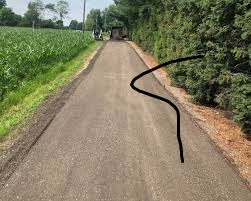This guide to asphalt paving is designed to provide simple and straightforward approach to paving so as to enable homeowners and business entities undertake quality paving projects. The following is a step-by-step overview of what you can expect during the process:
Client Meeting and assessment of the existing environment
Paving projects involve planning that starts with the consultation meeting between the client and the qualified contractor. This meeting is important because during it there is a site visit to evaluate the conditions that are already in the area. The contractor will also consider suitability of the surface for paving, design as well as drainage and any other issue related to paving task. This involves consideration of matters such as movement of the ground as well as problems of drainage that can be seen as likely to develop in future. Through effective evaluation of the site the contractor is in a position to come up with a unique strategy that would help to overcome such challenges that affect the paving process .
Site Preparation
After the site analysis a subsequent operation is considered as site preparation. This step involves removing any rubbish, plants and any previous pavement that may not require the new layer of asphalt to be placed on. In case of big works like commercial parking lots, road construction this stage might involve removal of old works or leveling the ground to make a firm base. Adequate preparation of the site helps to guarantee good bond between the new surface course and asphalt as well as maximize its performance. This phase plays critical role for achieving the long-term durability and design thickness of the final asphalt wearing course.
Excavation and Grading
Excavation and grading are very important activities in construction projects which involves many changes to the ground. Excavation entails creation of trenches to the desirable depth for enabling the creation of subgrades which refers to layers below asphalt. Grading then takes place in a bid to establish that the topography of the given surface has the correct gradient and is flat. Grading, as much as designing, plays a critical role in the construction of pavement since they allow proper drainage that is crucial in reducing water accumulation that causes formation of some cracks that are dangerous to pavement. It is important to prepare the ground well and grade it to optimal levels; this applies to a great extent the subsequent asphalt surface.
Paving
When the excavation and grading are done the paving process starts. Hot mix asphalt will be processed and put and laid on the graded surface by a paver machine hired by the contractor. The paver machine also guarantees that the asphalt has sunk to the standard and correct thickness as required. This helps to get a proper and wearing resistant surface for easy usage. It is important that a lot of attention is paid towards how the paving is done to ensure that the asphalt is spread right. Overall work in paving is complete at this stage and therefore it is critical for paving work to be done effectively to result in a strong pavement layer for the overall asphalt surface to be strong.
